Soft Provençal breezes, tactile stone, and a gentle palette of wheat-washed neutrals give a French country fireplace its irresistible allure. Whether you’re aiming for rustic farmhouse charm or chateau-level refinement, the hearth can anchor the entire room, wrapping gatherings in warmth while showcasing heirloom treasures. Below you’ll find twenty ideas—each a stand-alone concept—to help you re-imagine your own fireplace, from hand-carved limestone surrounds to simple ways of styling an unused firebox for summer. Every tip stays true to the easy elegance of rural France while offering actionable details you can adapt to any budget or footprint. Ready to spark that Old-World glow? Step inside and explore.
1. Hand-Carved Limestone Statement

A substantial limestone fireplace immediately transports a room to sun-bleached Provence. Opt for a bespoke surround with curved jambs and a shallow trumeau, carved from local stone so the creamy tones and fossil flecks remain visible. Design ateliers note that this material radiates heat efficiently while aging to a soft patina that feels centuries old. Pair it with a raised hearth slab for extra seating and finish the look with antique brass fire-tools for authenticity. The solidity of stone makes even modern rooms feel rooted in history—no elaborate styling required.
2. Weathered Beam Mantel Magic

Few accents whisper “farmhouse” like a reclaimed oak beam spanning a brick or stone fireplace. Salvaged wood—complete with adze marks and French peg holes—brings instant soul without overpowering delicate plaster walls. Secure the timber with concealed steel brackets, then layer simple pottery and taper candles for a lived-in tableau. Designers favor beams about one-third the width of the surround to maintain balance and avoid visual heaviness. The result is a relaxed perch that invites seasonal swaps, whether lavender bundles in summer or greenery in winter.
3. Elegantly Carved Louis XV Surround
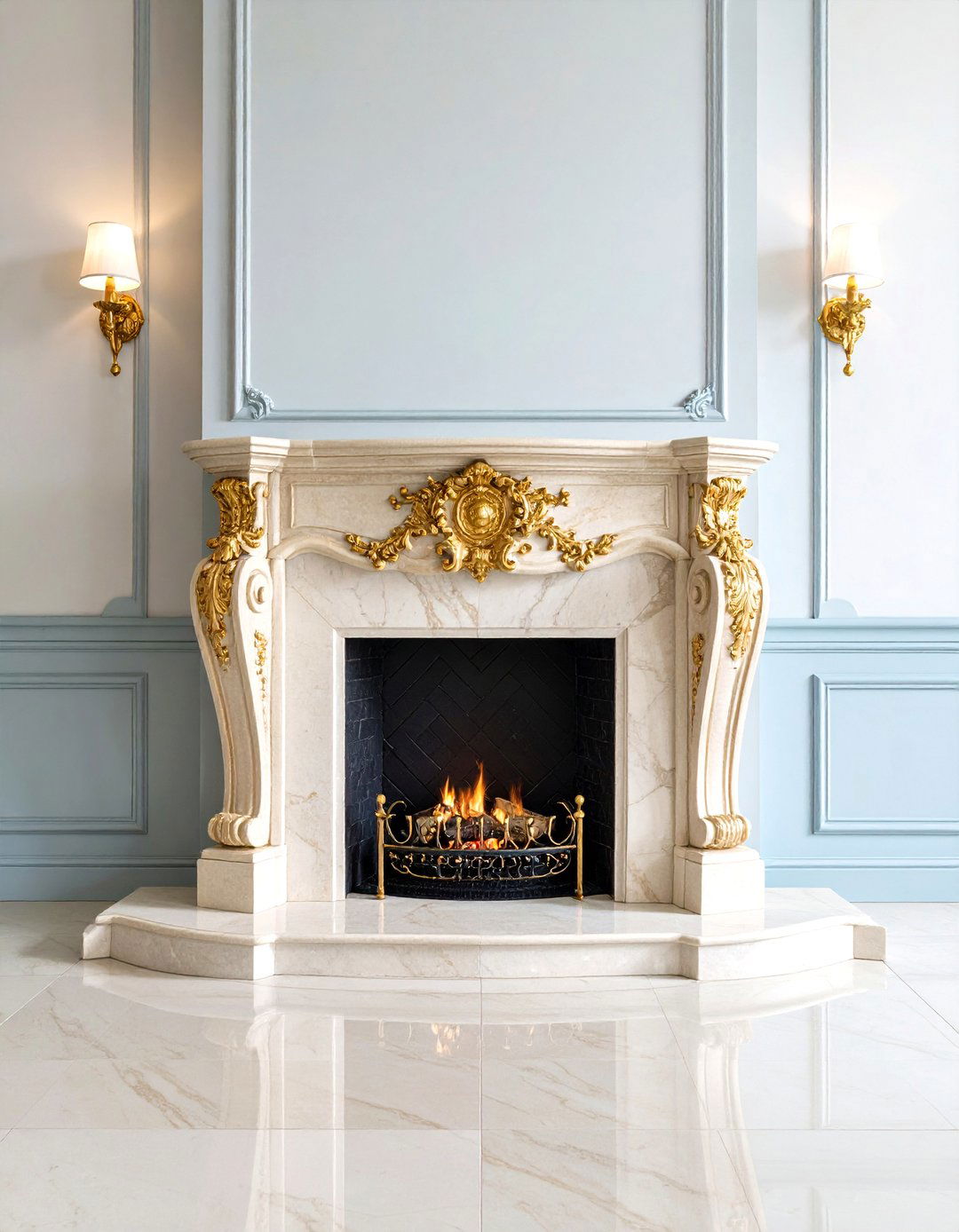
For chateau elegance, commission or source a Louis XV-inspired mantel with scrolled legs, serpentine apron, and a soft ogee profile. When carved from pale Dijon limestone, the intricate curves stand out yet remain understated against lime-plastered walls. Keep the hearth opening tall and slightly arched, echoing 18th-century French proportions. Gilded sconce pairs flanking the over-mantel underscore the formality without tipping into excess. Even when the fire is cold, the sculptural surround acts as art, lending couture refinement to casual furnishings.
4. Lime-Washed Fieldstone Refresh
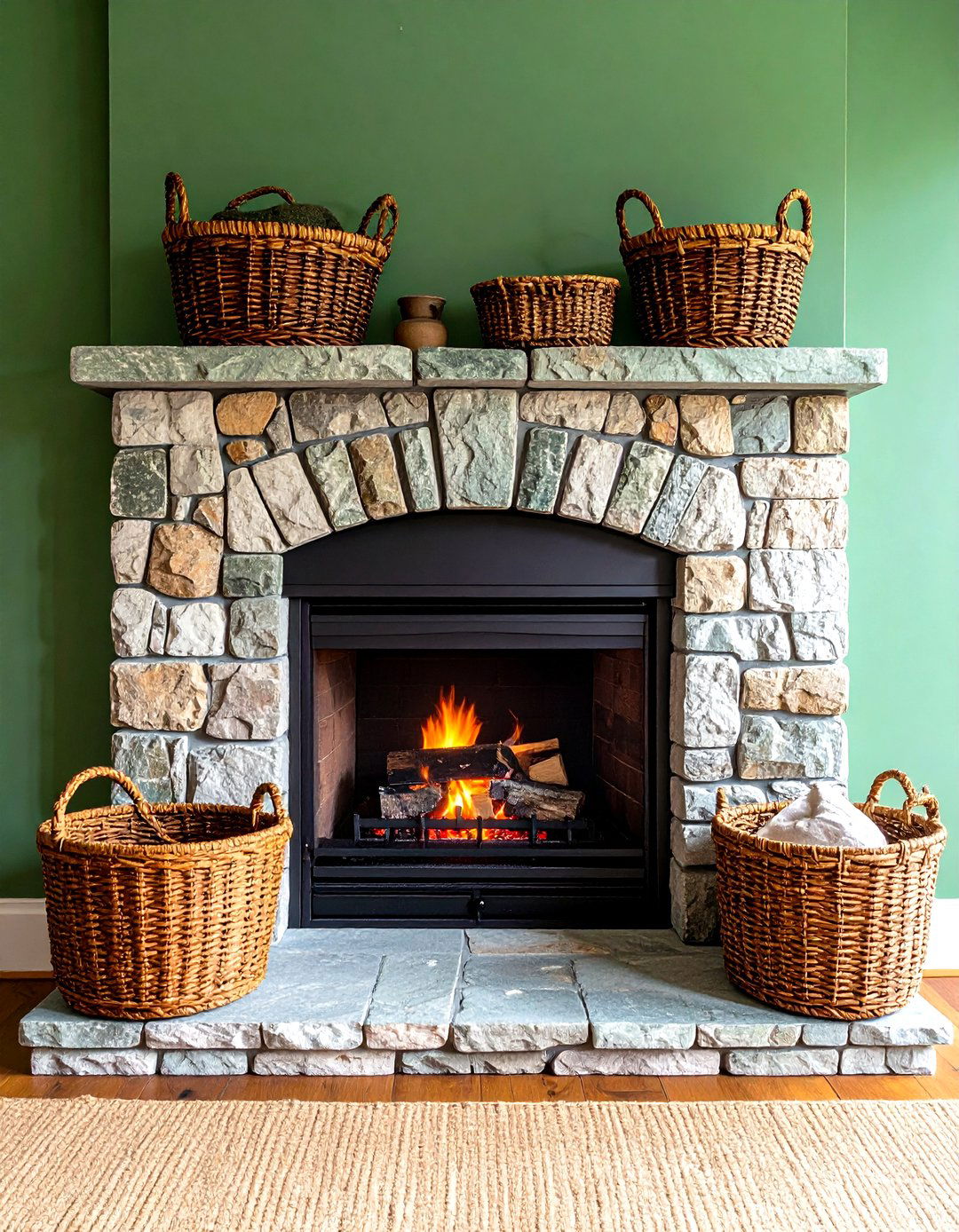
If your fireplace already wears rugged stone, a thin lime-wash can soften harsh grout lines and cool gray tones, yielding that timeworn farmhouse finish. Blend hydrated lime with warm water, brushing it on in irregular passes so some original color peeks through. Once dry, lightly sand raised areas to mimic natural weathering. Homeowners love the breathable surface—no peeling paint—and the way it brightens dark corners while keeping texture intact. Complement with woven rush baskets for wood storage to amplify the rustic vibe.
5. Herringbone Brick Firebox Detail
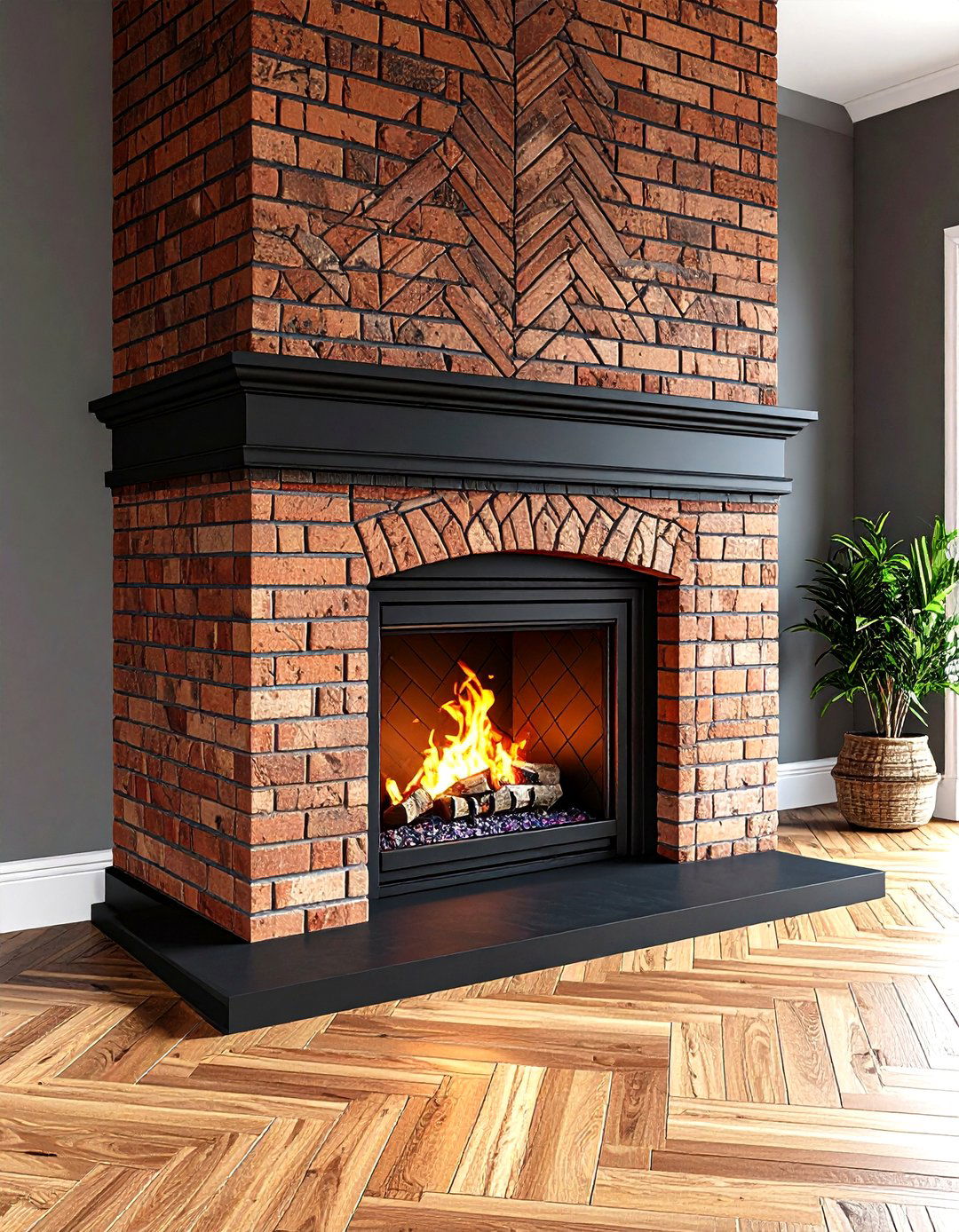
Inside the firebox, switching from standard running bond to a herringbone brick pattern injects Parisian bistro flair. Lay thin fire-brick on edge, alternating angles to form that classic chevron. The subtle zig-zag creates depth and masks soot between cleanings. Finish joints with dark refractory mortar so the bricks read like vintage flooring. When flames dance, the angled faces catch light, adding movement and sophistication without any extra cost once the mason is on-site.
6. Blue-and-White Porcelain Mantel Display
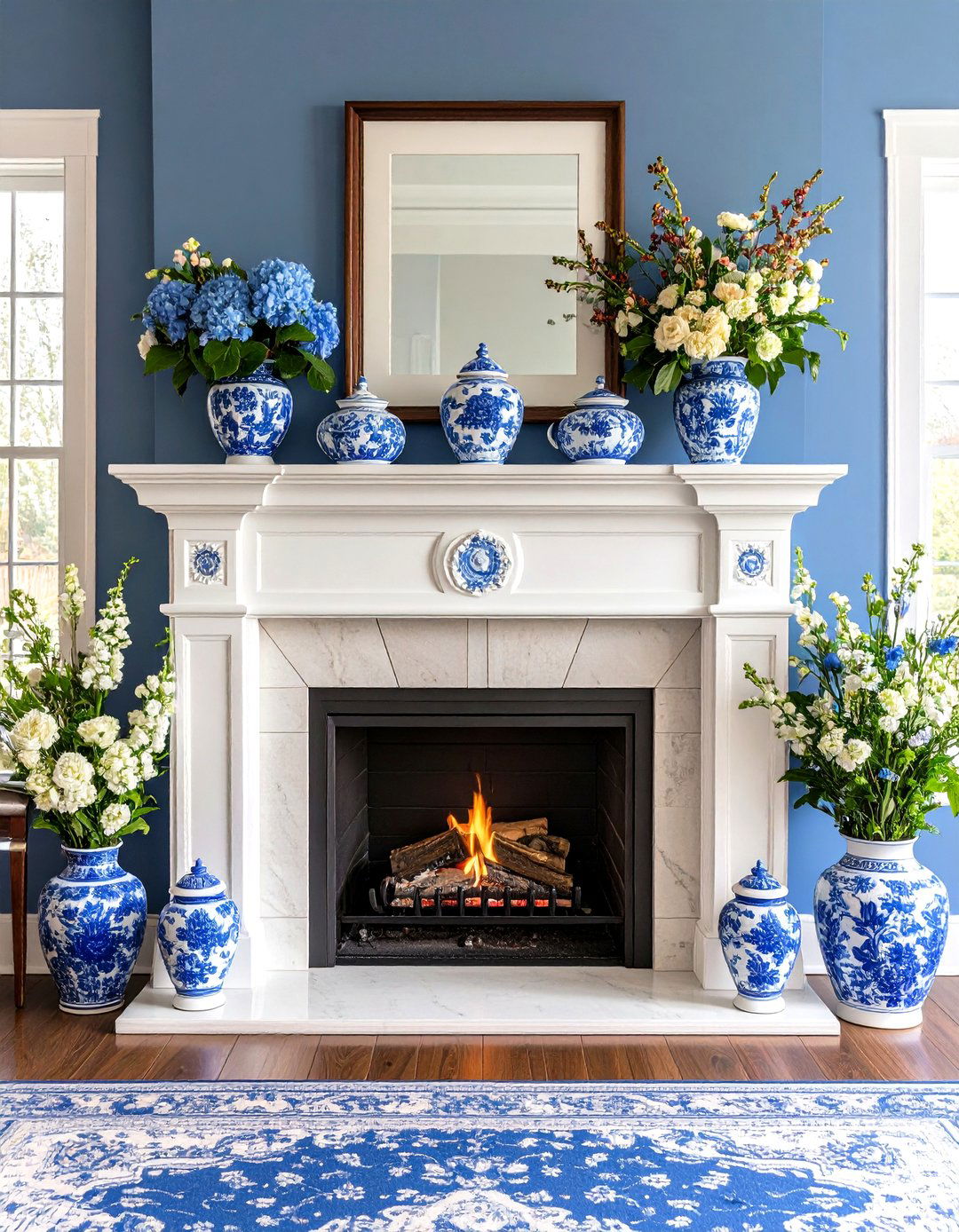
Nothing channels French country grace like a line-up of blue-and-white jars atop a crisp white mantel. Cluster ginger pots of varying heights, letting negative space breathe between pieces to prevent clutter. The cobalt patterns resonate with Provençal linens and instantly brighten neutral stone. Curators recommend odd-number groupings—three or five vessels—for rhythm. Swap in seasonal stems or dried hydrangea heads for height variation while retaining the palette.
7. Antique Mirror Above the Hearth
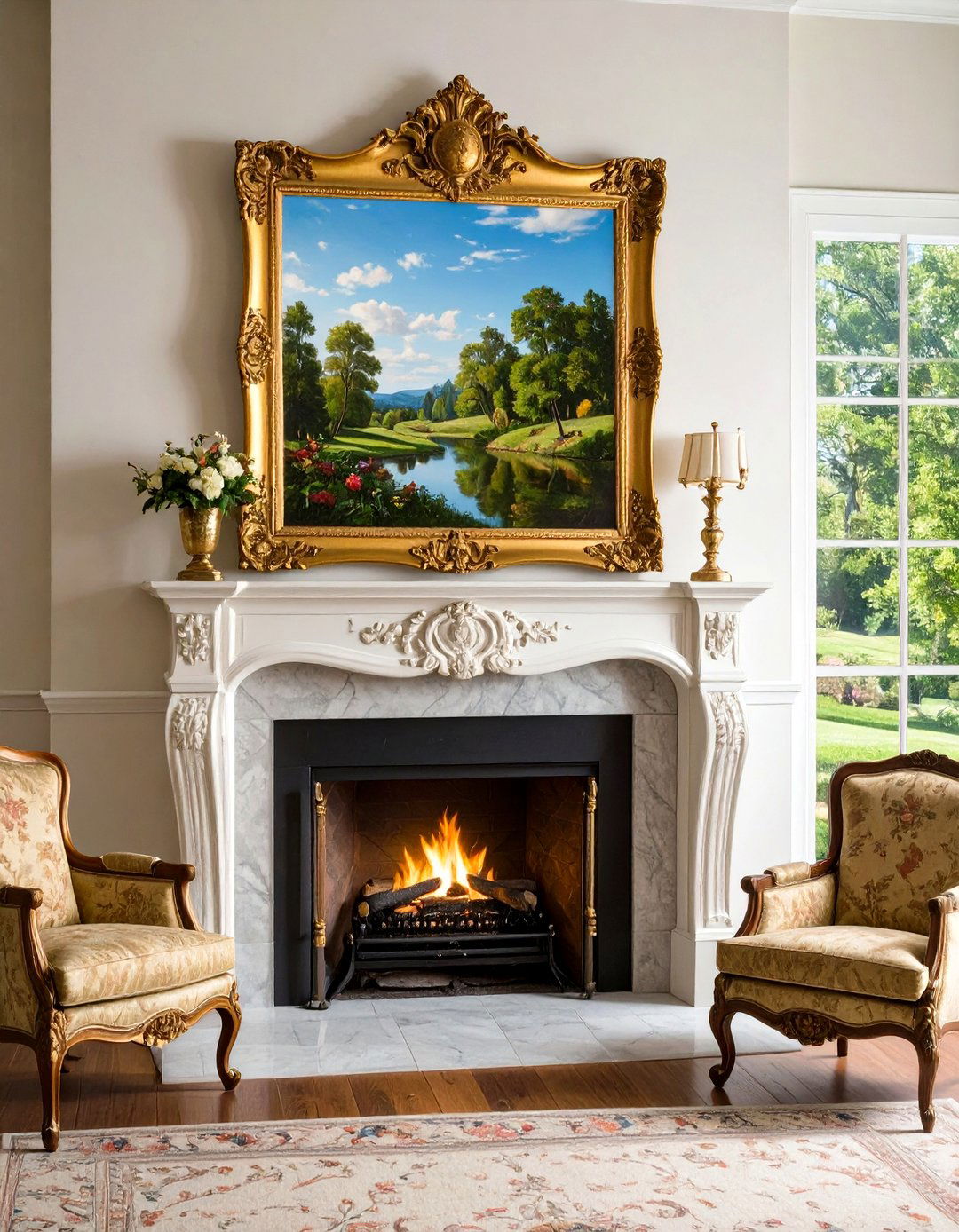
Replacing expected art with an aged gilt mirror amplifies light and doubles the room’s sense of space. Experts suggest choosing a mirror at least two-thirds the width of the fireplace, ensuring the reflective surface neither dwarfs nor overhangs the mantel. Lean it slightly forward rather than mounting flush to create casual depth, then layer a small landscape painting in front for French salon charm. Check the reflection: it should capture either a window or chandelier—not a ceiling fan.
8. Wrought-Iron Screen Artisan Touch

Trade factory screens for hand-forged ironwork featuring twisted balusters or delicate scrolls reminiscent of Parisian balconies. Custom smiths can echo arch shapes in the mantel or incorporate fleur-de-lis for subtle theming. Besides shielding embers, the dark metal adds graphic punch against pale limestone or brick, especially when firelight flickers through negative space. Off-season, position pillar candles behind the screen for a warm glow with zero soot.
9. Vintage Boulangerie Sign Focal Point
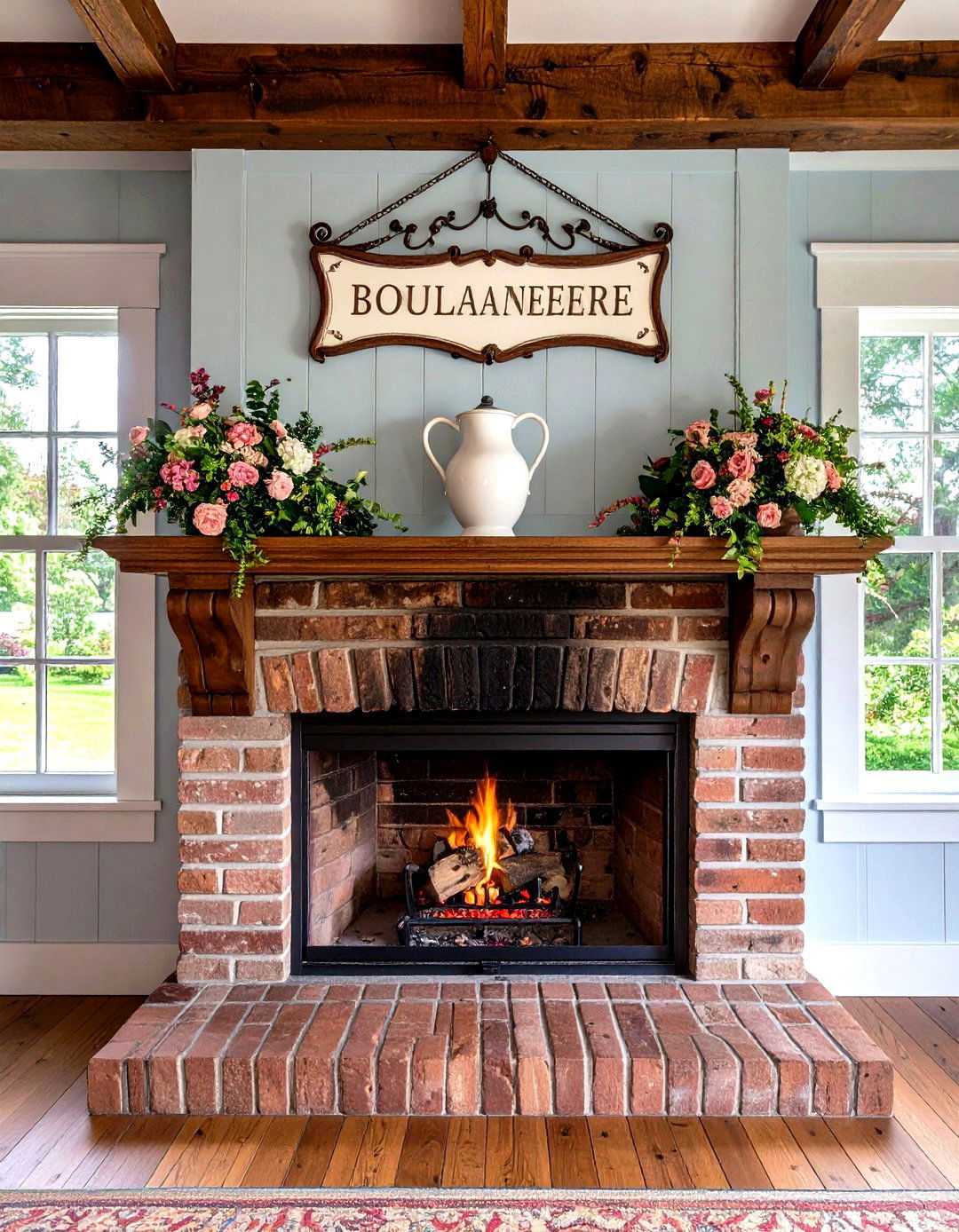
Elevate a simple French country fireplace by hanging a time-worn boulangerie or épicerie sign where art might normally sit. The weathered typography and muted colors introduce storytelling while echoing market-town nostalgia. Balance the bold plaque with understated mantel décor—think a single ironstone pitcher filled with olive branches—so the sign remains hero. Secure heavy timber pieces with french cleats rated for masonry to avoid mishaps.
10. Delft-Style Tile Surround
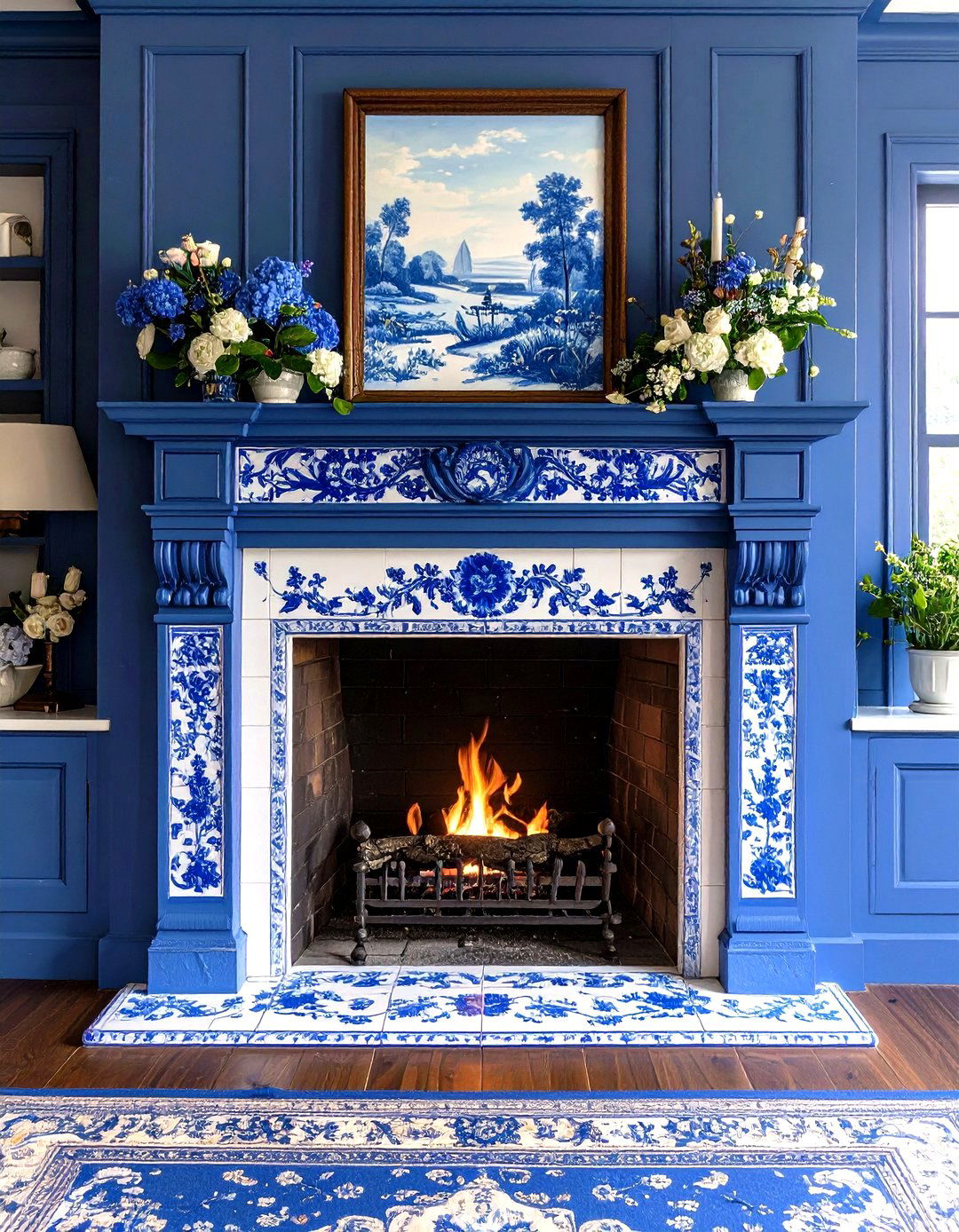
Frame the firebox with hand-painted Delft or faience tiles depicting pastoral scenes or cobalt florals. The glossy surfaces bounce flame light, and the small scale contrasts beautifully with chunky stone elsewhere. Tile specialists advocate a soldier course along the inner edge to protect artwork from direct heat. Keep grout ultra-thin to spotlight each miniature painting, delivering museum-worthy detail without overwhelming the broader room.
11. Lavender Bundles and Natural Accents
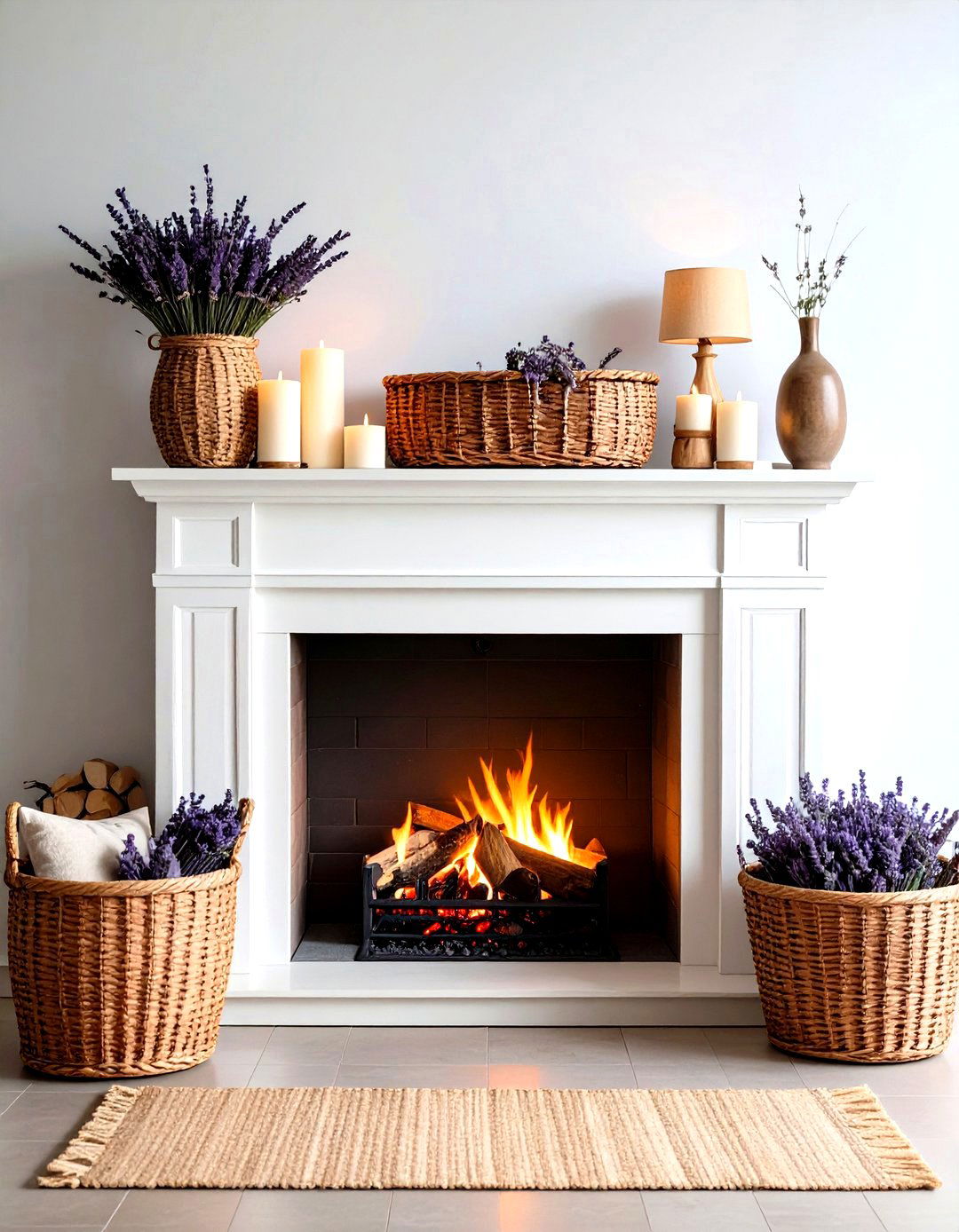
Harness Provence itself by tucking dried lavender sheaves beneath the mantel and filling nearby baskets with birch logs. The subtle fragrance releases as fire warmth rises, creating multisensory comfort. Complement with olive-wood candlesticks and a linen runner for organic layering. Such touches cost little yet intensify the fireplace’s rustic authenticity, reminding guests of sun-soaked fields beyond the Rhône.
12. Built-In Hearthside Reading Nook
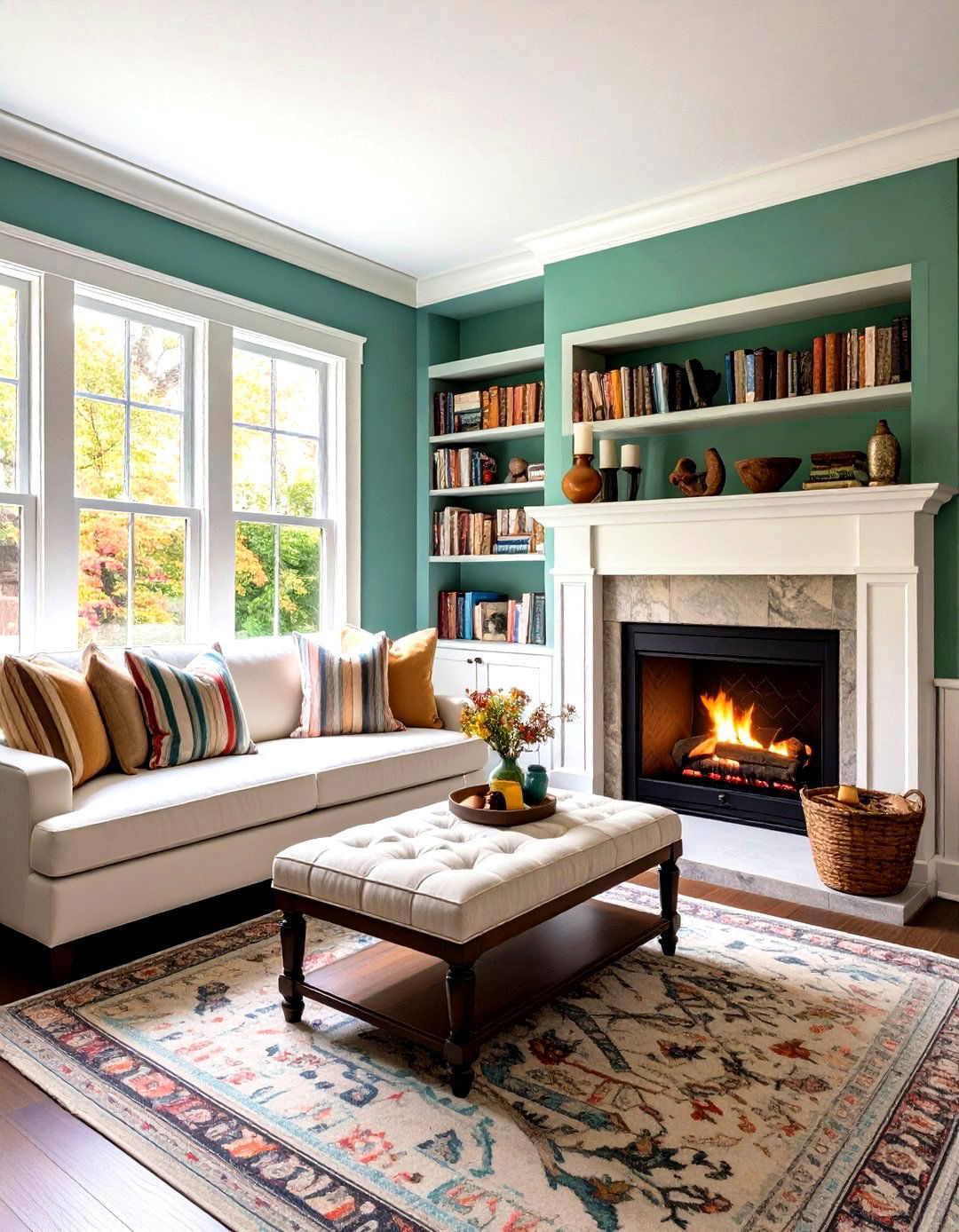
Where space allows, extend the limestone hearth slab sideways into a low bench, upholstering it with ticking-stripe cushions. Shelve books overhead in reclaimed oak for a library feel. Designers note that positioning seating within arm’s reach of the flames encourages lingering and makes small living rooms work harder. Keep cushion covers washable; soot and smoldering logs create fine dust even with a screen in place.
13. Soft Blue Painted Brick Update
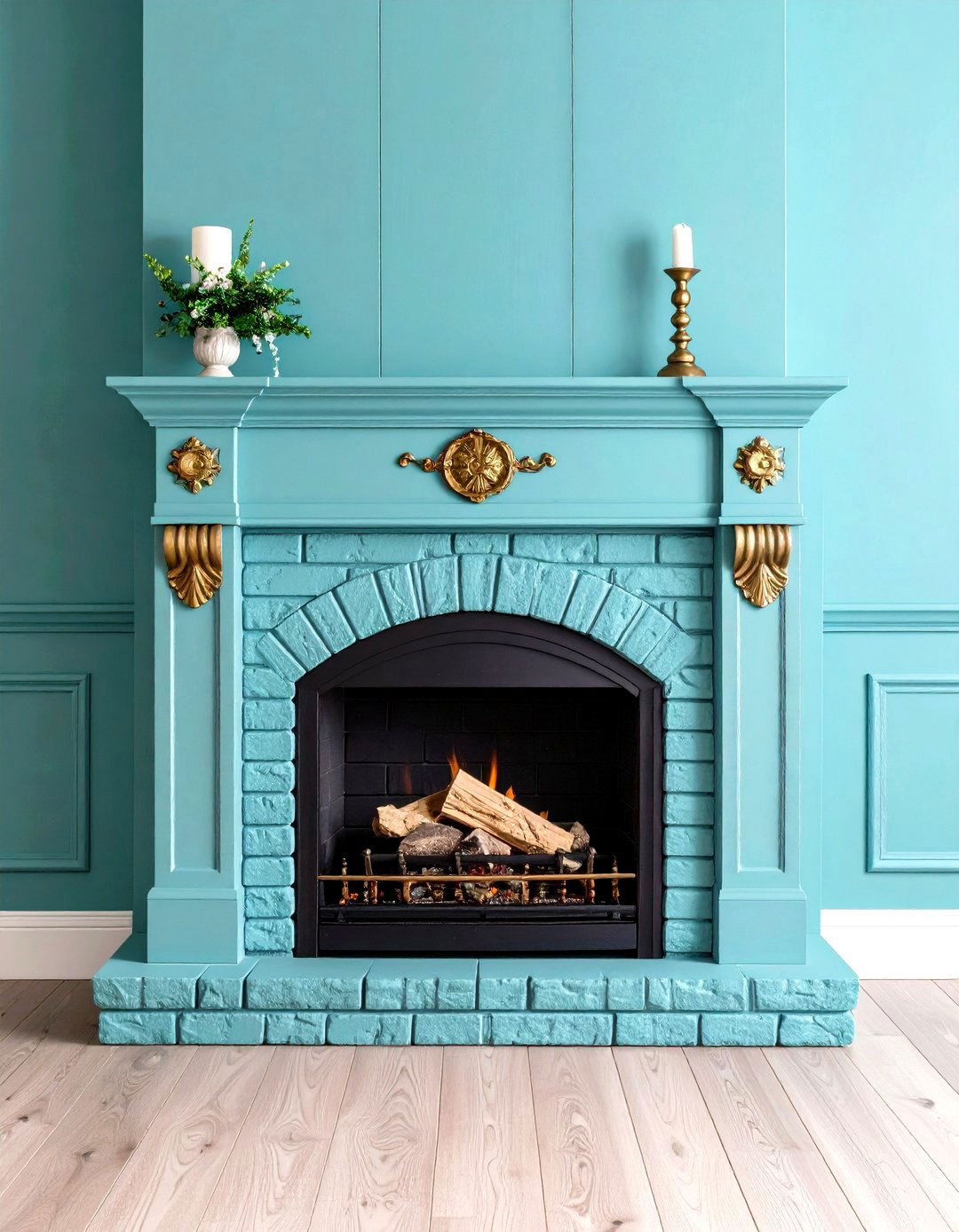
Give tired red brick a whisper of French blue—think smoky slate or chalky cornflower—with high-temperature masonry paint. This hue harmonizes with antique brass and reclaimed pine while muting visual weight. Before painting, scrub brick with trisodium phosphate and apply a masonry primer to prevent bleed-through. Homeowners who feared masking patina often find the soft color modernizes without erasing the brick’s rustic texture.
14. Cast-Iron Stove Inset
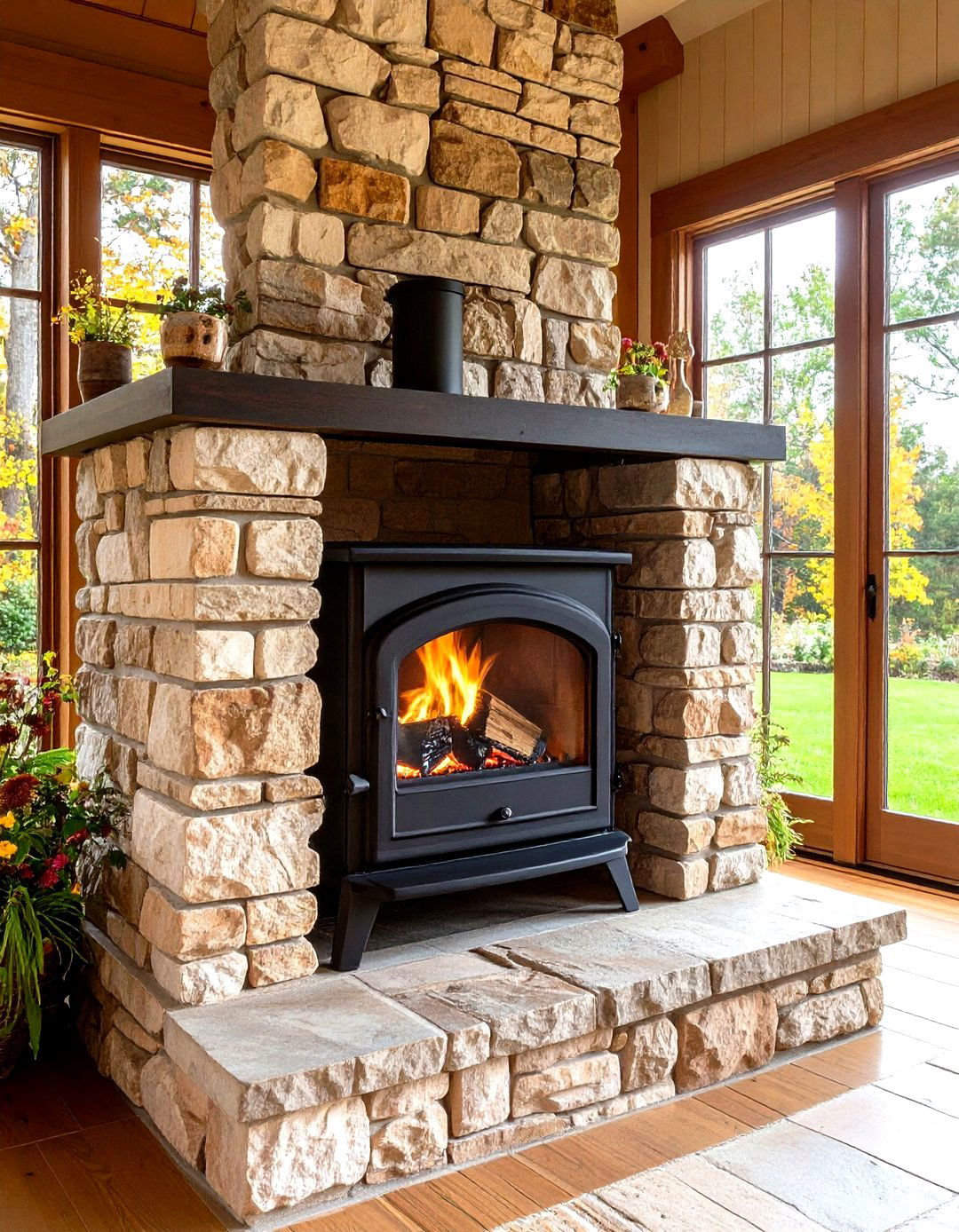
For cottages lacking a traditional chimney, install a compact black cast-iron stove recessed within a shallow masonry alcove. Its utilitarian silhouette suits rural aesthetics and offers higher fuel efficiency than an open fire. Surround the inset with fieldstone or lime-washed brick, and add a slim oak ledge above for décor. The contrasting textures—matte iron against porous stone—exude understated authenticity.
15. Raised Hearth Bench Seating
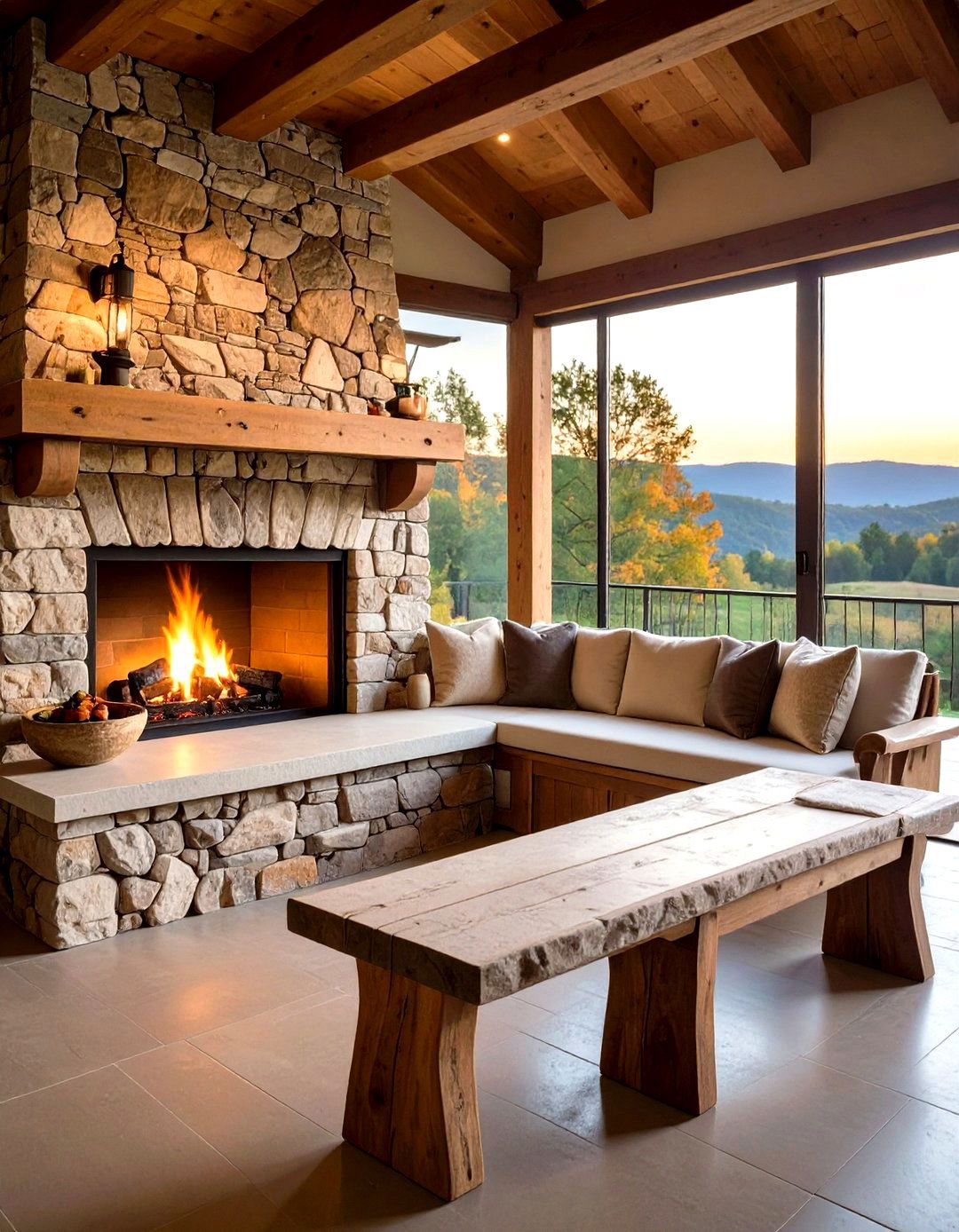
Elevate the firebox 16-18 inches, creating a broad stone bench that functions as extra seating during gatherings. Rustic farm tables often sit nearby, so guests can perch comfortably by dancing flames between courses. Masons recommend a single slab for strength; limestone or soapstone keeps toasty yet not scorching. Finish the front edge with a gentle bullnose for comfort and to echo curved French millwork elsewhere.
16. Floor-to-Ceiling Fieldstone Drama
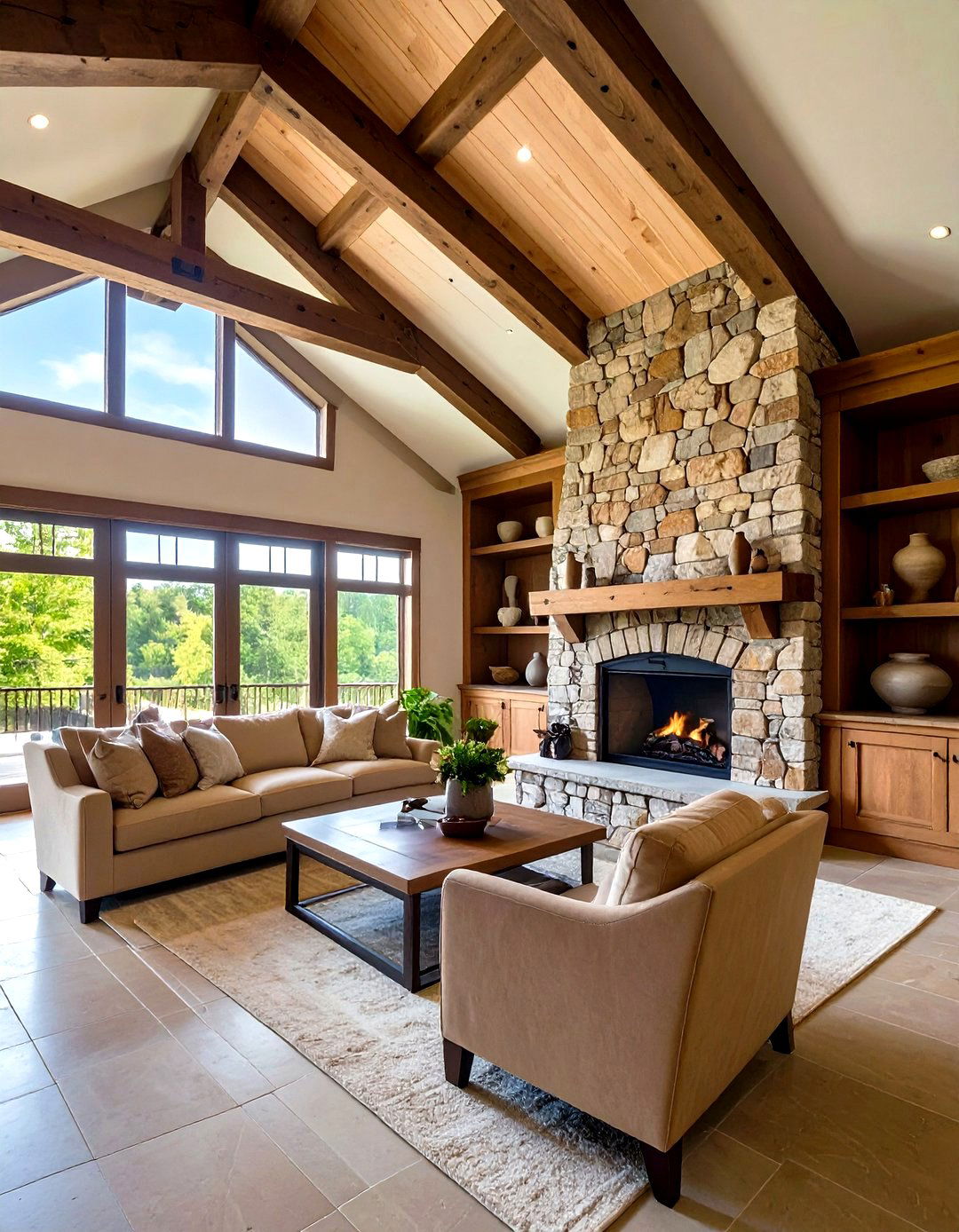
Take stonework all the way to a vaulted ceiling for lodge-like grandeur that still feels French country when paired with pale grout and a simple weathered beam mantel. Asymmetrical built-ins beside the mass of stone prevent the composition from becoming monolithic. Keep shelving contents restrained—neutral pottery, vintage hardbacks—so the rugged masonry remains focal.
17. Refined Marble Mantel in Neutrals
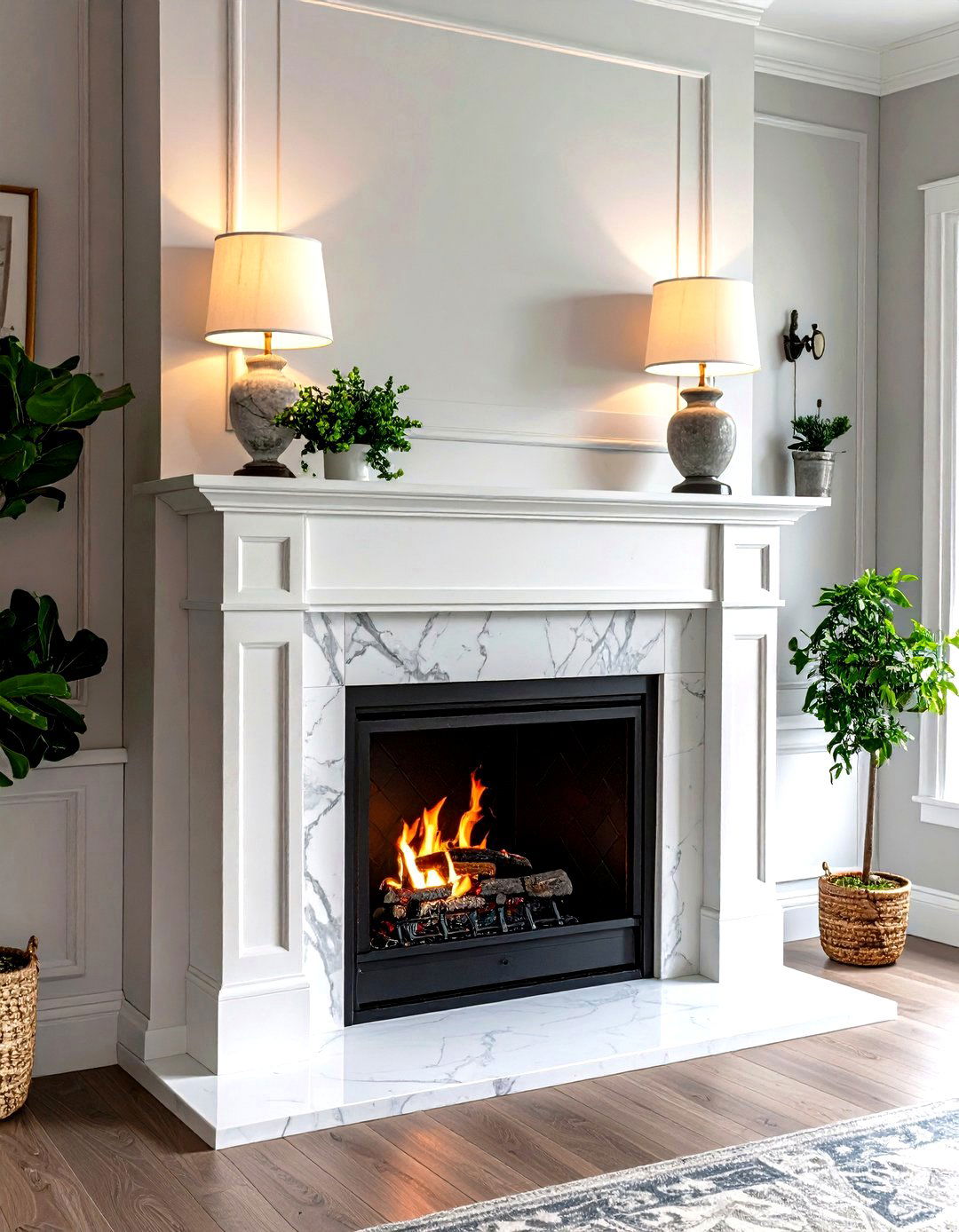
If your taste leans elegant rather than rustic, a slim marble surround with subtle grey veining delivers Paris apartment sophistication within a countryside setting. Pair with paneled walls painted creamy white to amplify natural light and let the fire’s glow reflect off polished stone. Understate mantel décor; a single alabaster lamp and miniature topiary suffice. The restraint highlights material quality—a hallmark of French design.
18. Outdoor Stone Hearth à la Provence
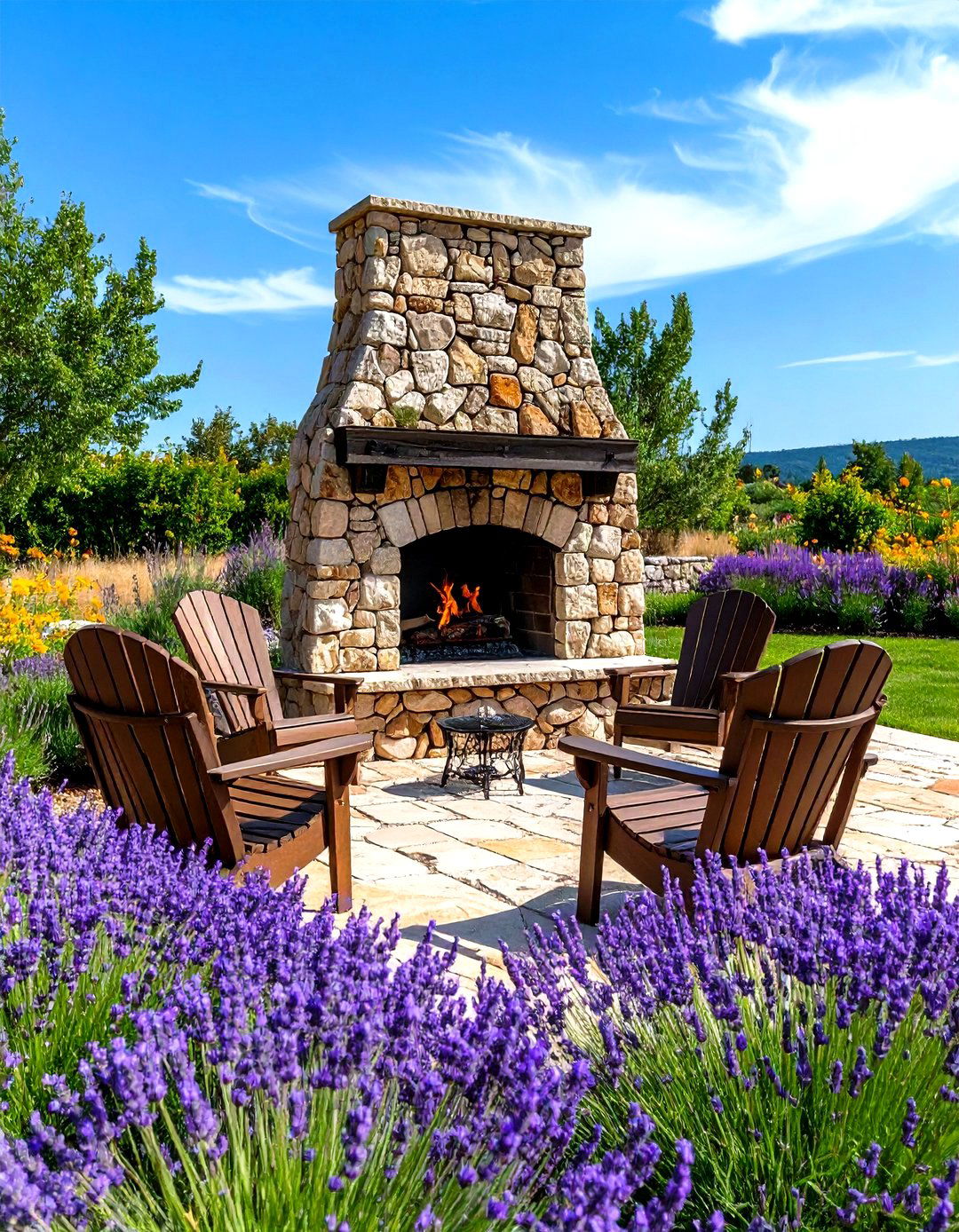
Extend French country living outdoors with a freestanding fieldstone fireplace anchoring a gravel terrace. Seat low teak or wrought-iron chairs in a semicircle, and plant lavender and rosemary along the base so fragrance mingles with wood smoke. Builders advise raising the firebox slightly to double as an impromptu bar ledge during summer soirées. Roof lines aren’t necessary; the rustic chimney feels at home beneath the stars.
19. Wall of Plates Above the Mantel
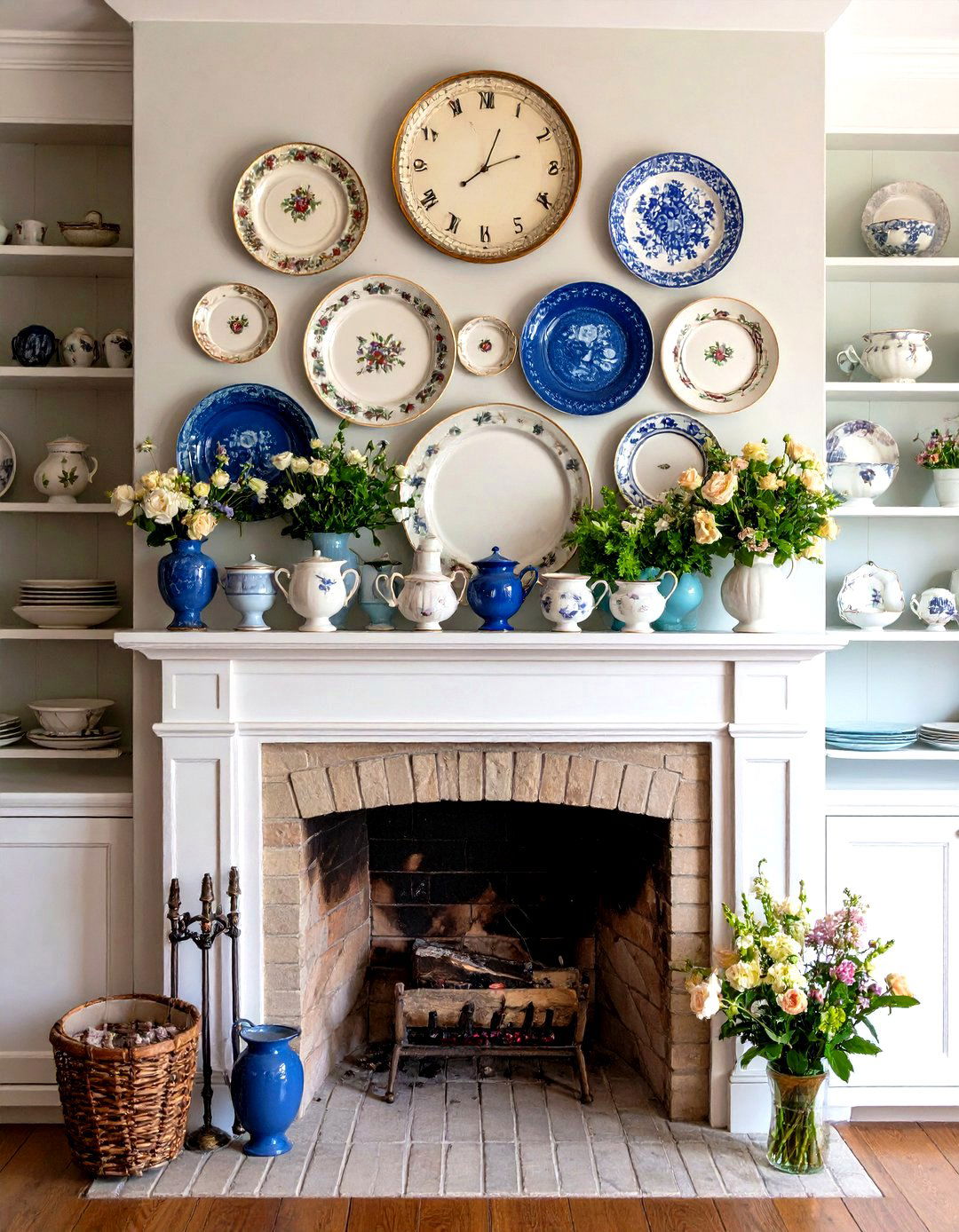
Create an artful plate wall just above the fireplace, mixing transferware and plain creamware in fluid, asymmetrical clusters. Curators suggest beginning with a central charger, then spiraling outward with smaller saucers, maintaining two inches between pieces. Clear removable adhesive discs spare the plaster and allow seasonal swaps. The layered ceramics add delicate pattern that complements sturdy stone while nodding to French dining culture.
20. Candle-Filled Summer Hearth
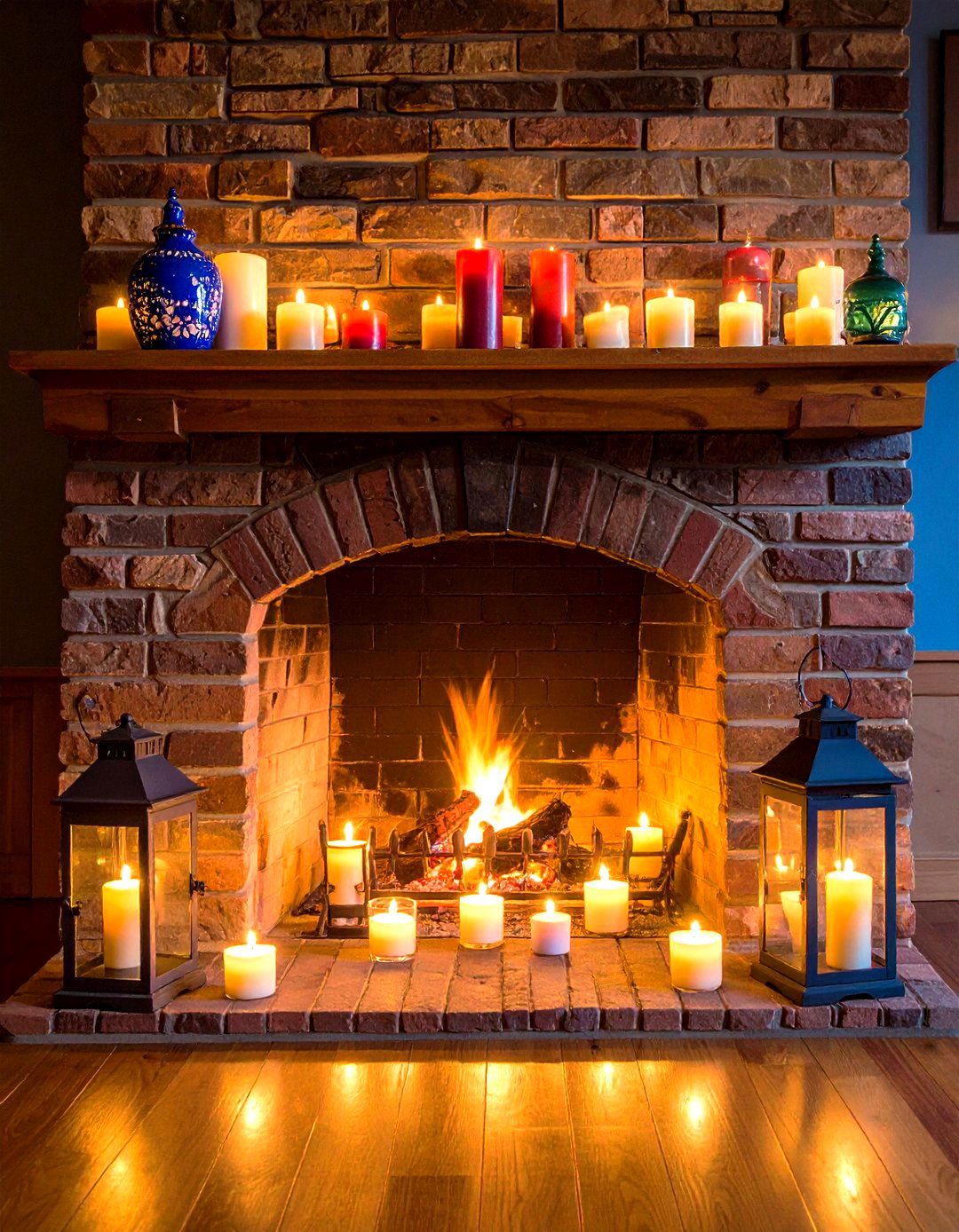
When flames feel excessive, convert the French country fireplace into a flickering tableau of pillar candles and hurricane lanterns. Designers often elevate candles on staggered bricks inside the firebox so flames appear varied in height, mimicking wood. A few sprigs of dried olive or eucalyptus laid across the grate introduce color and scent. This approach keeps the hearth purposeful year-round while preventing heat build-up.
Conclusion:
A French country fireplace is more than a heat source—it’s the soul of the room, merging function with ageless beauty. From carved limestone silhouettes and reclaimed beam mantels to tile-trimmed surrounds and lavender-scented hearths, each idea above layers texture, warmth, and personal history. Mix rugged elements like fieldstone with refined touches such as gilded mirrors, or keep things simple with a lime-wash and woven basket of birch. Whichever path you choose, let authenticity guide your choices; natural materials, soft hues, and storied artifacts will ensure your fire glows with genuine Gallic charm long after the embers fade.




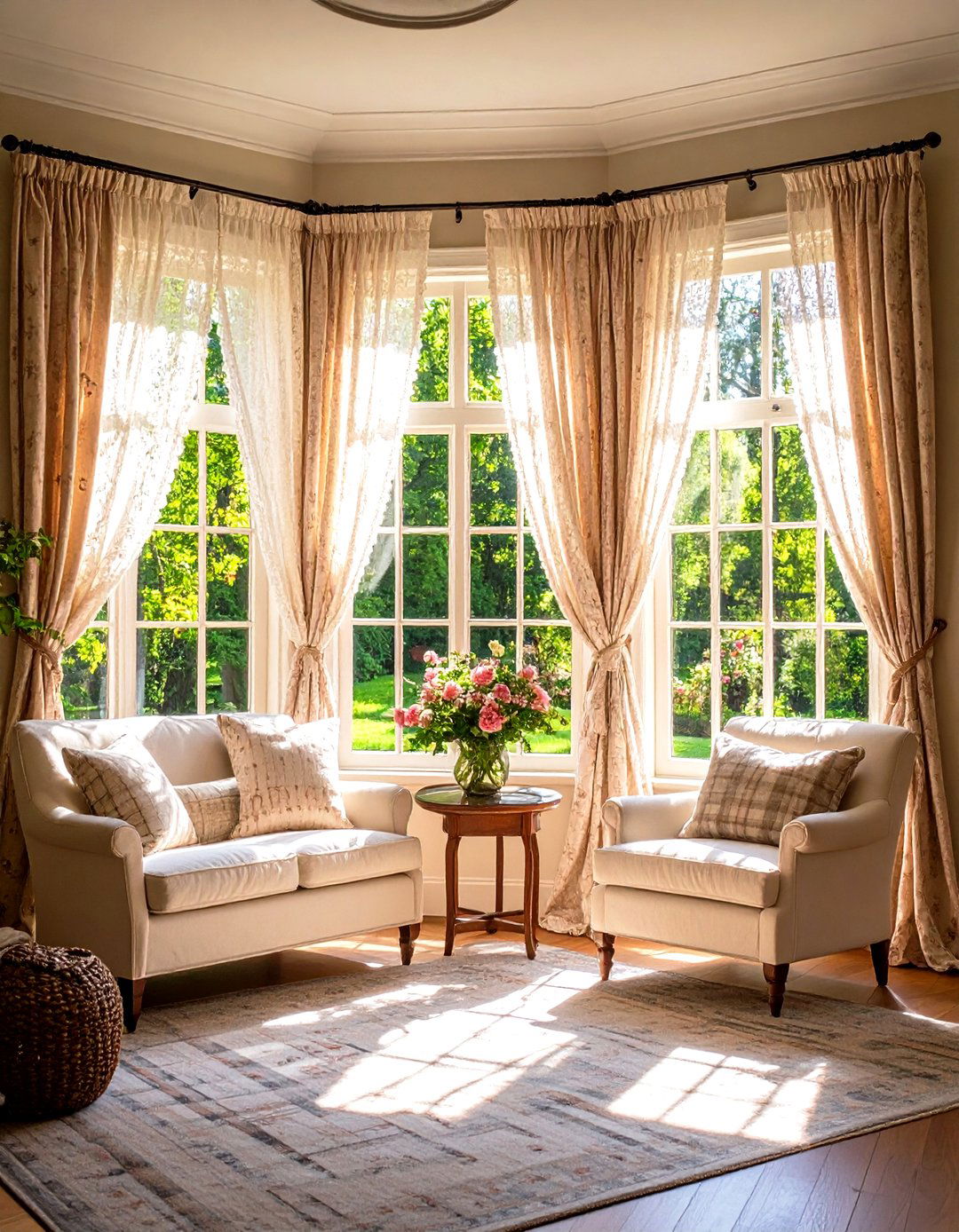
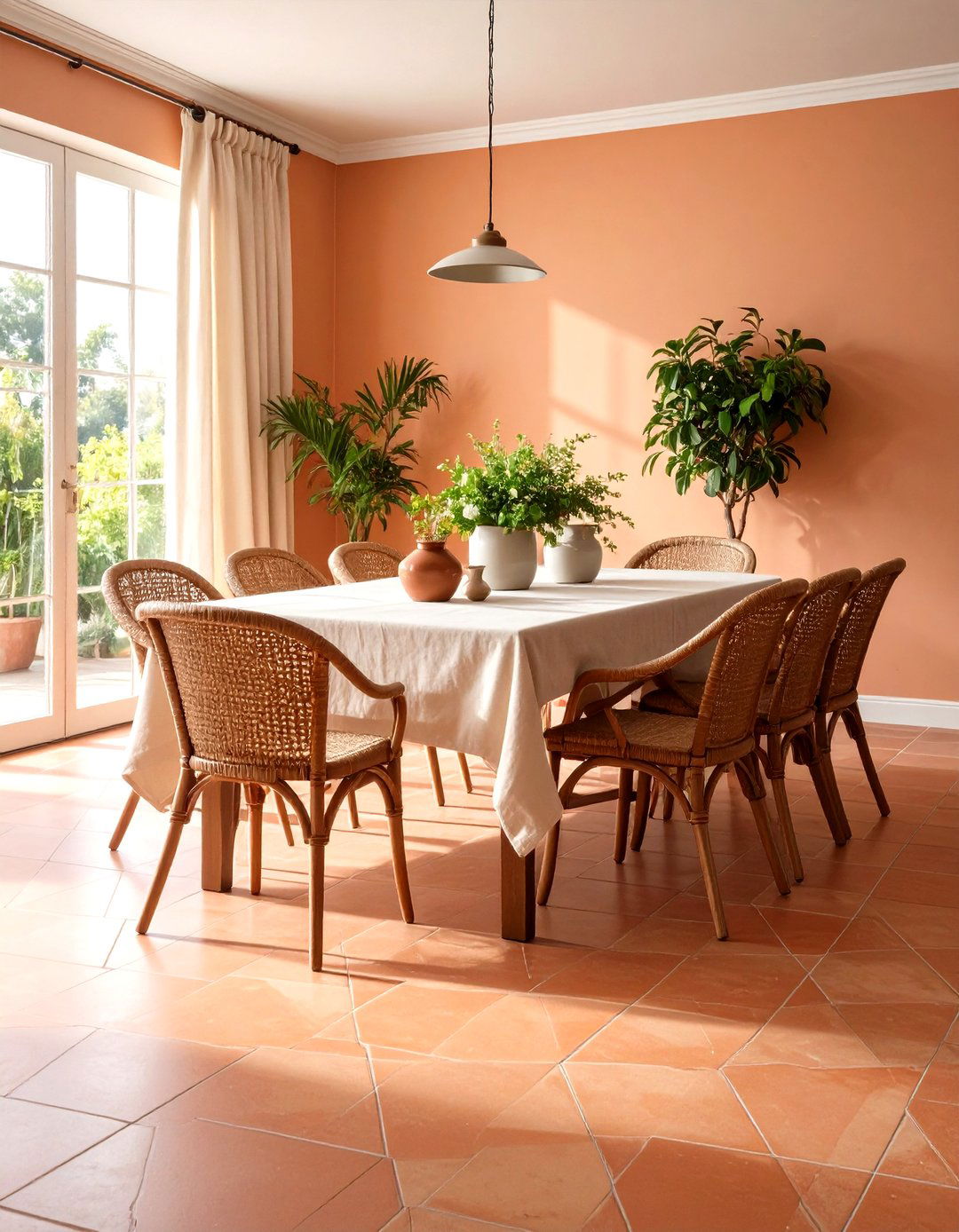
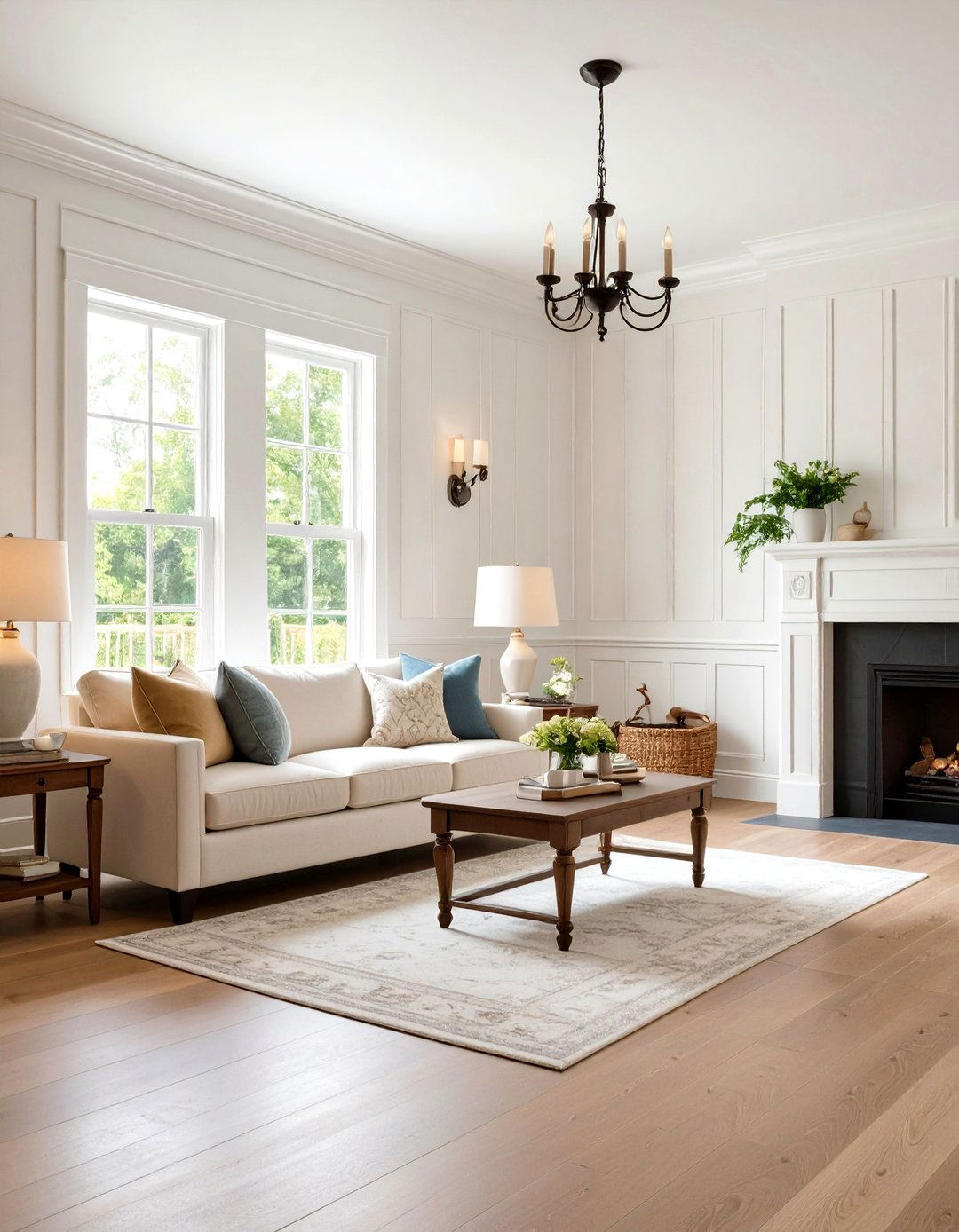
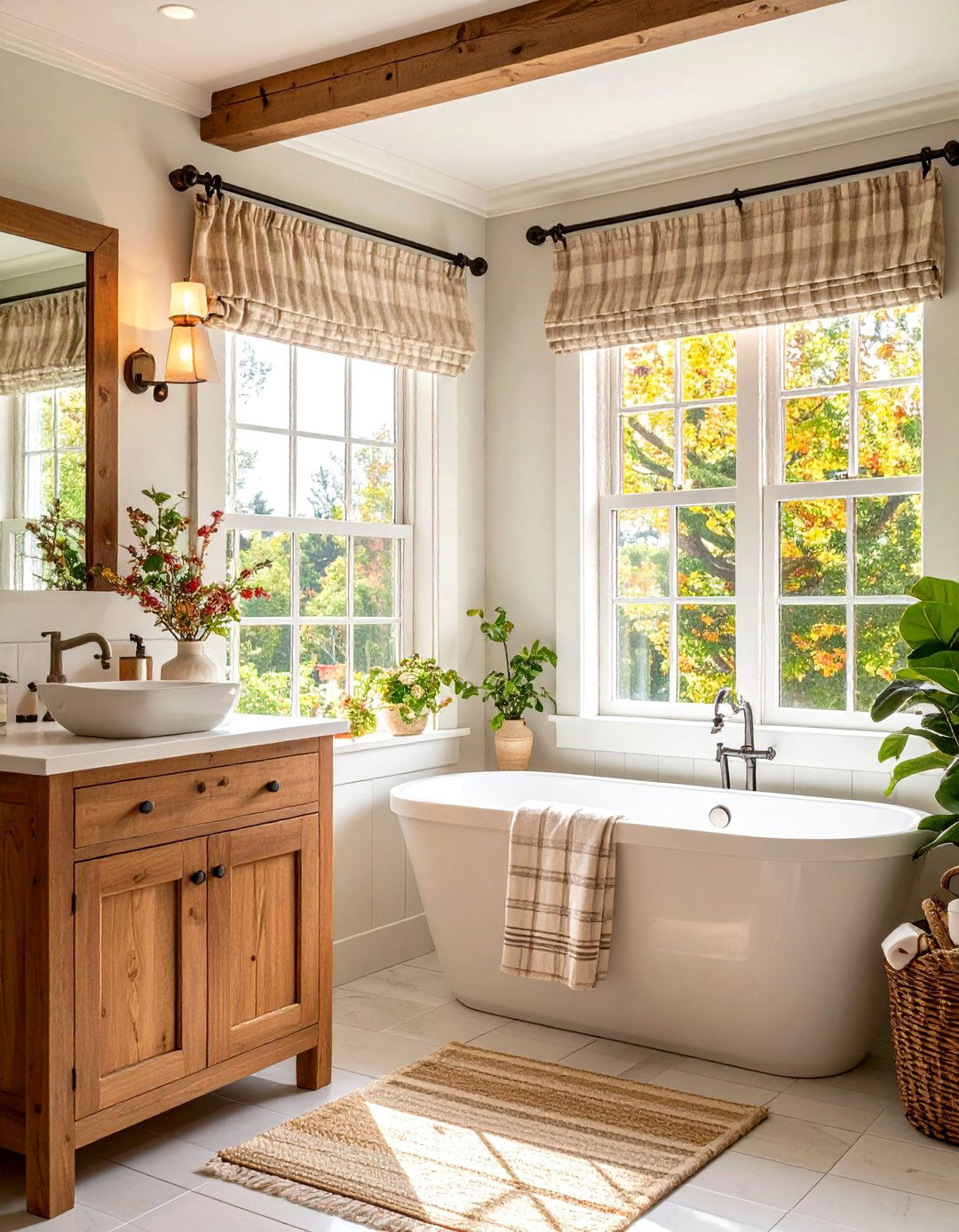
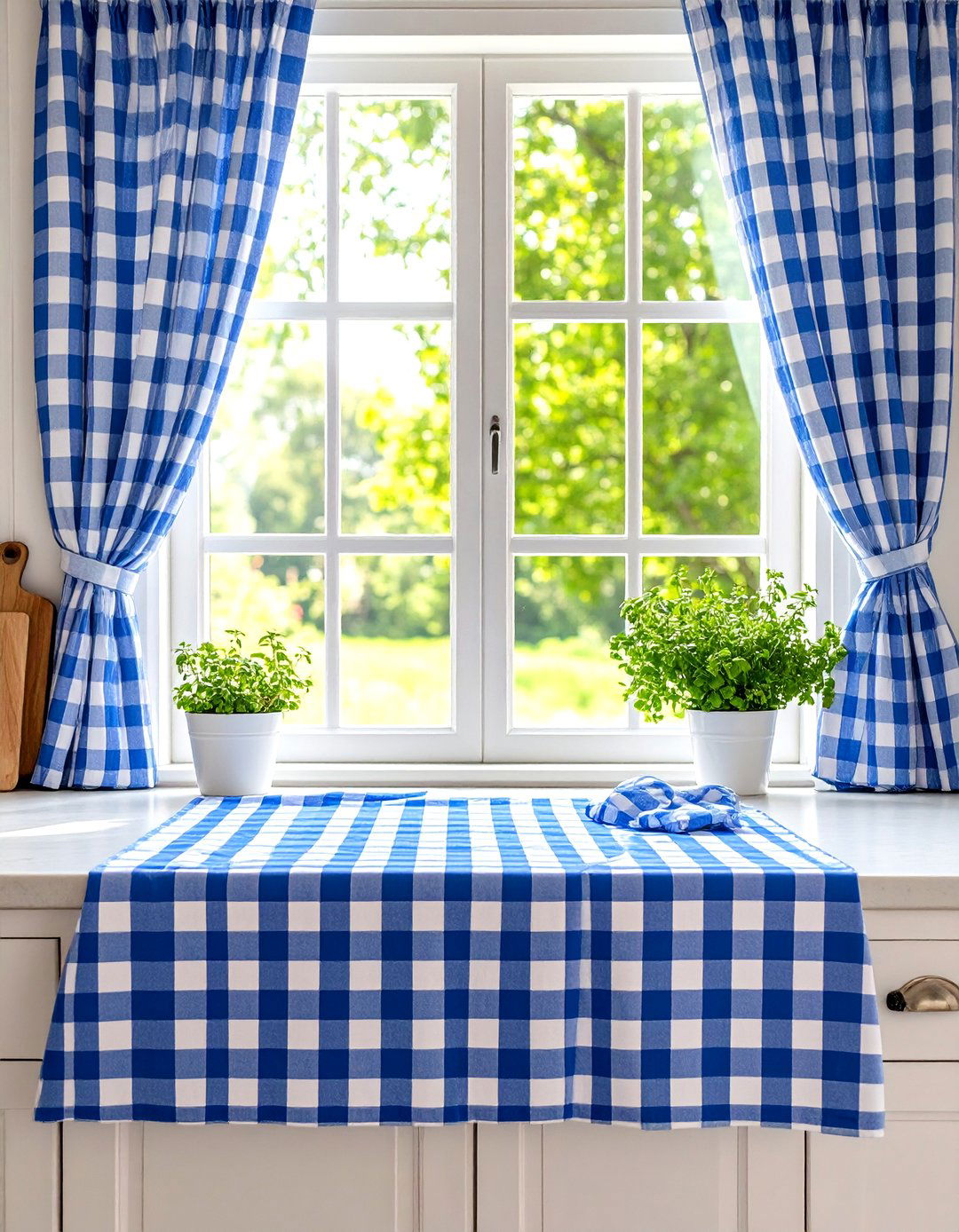



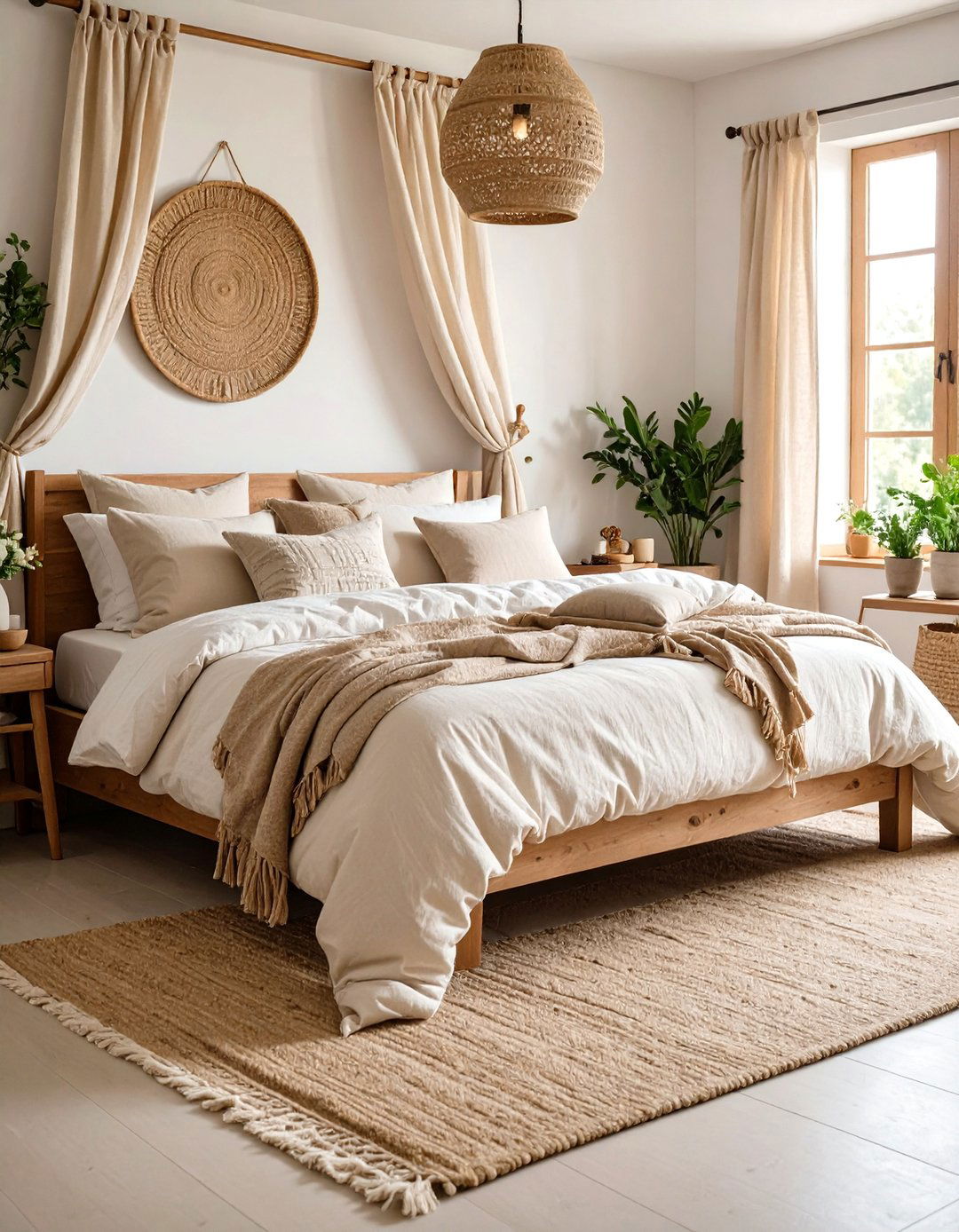
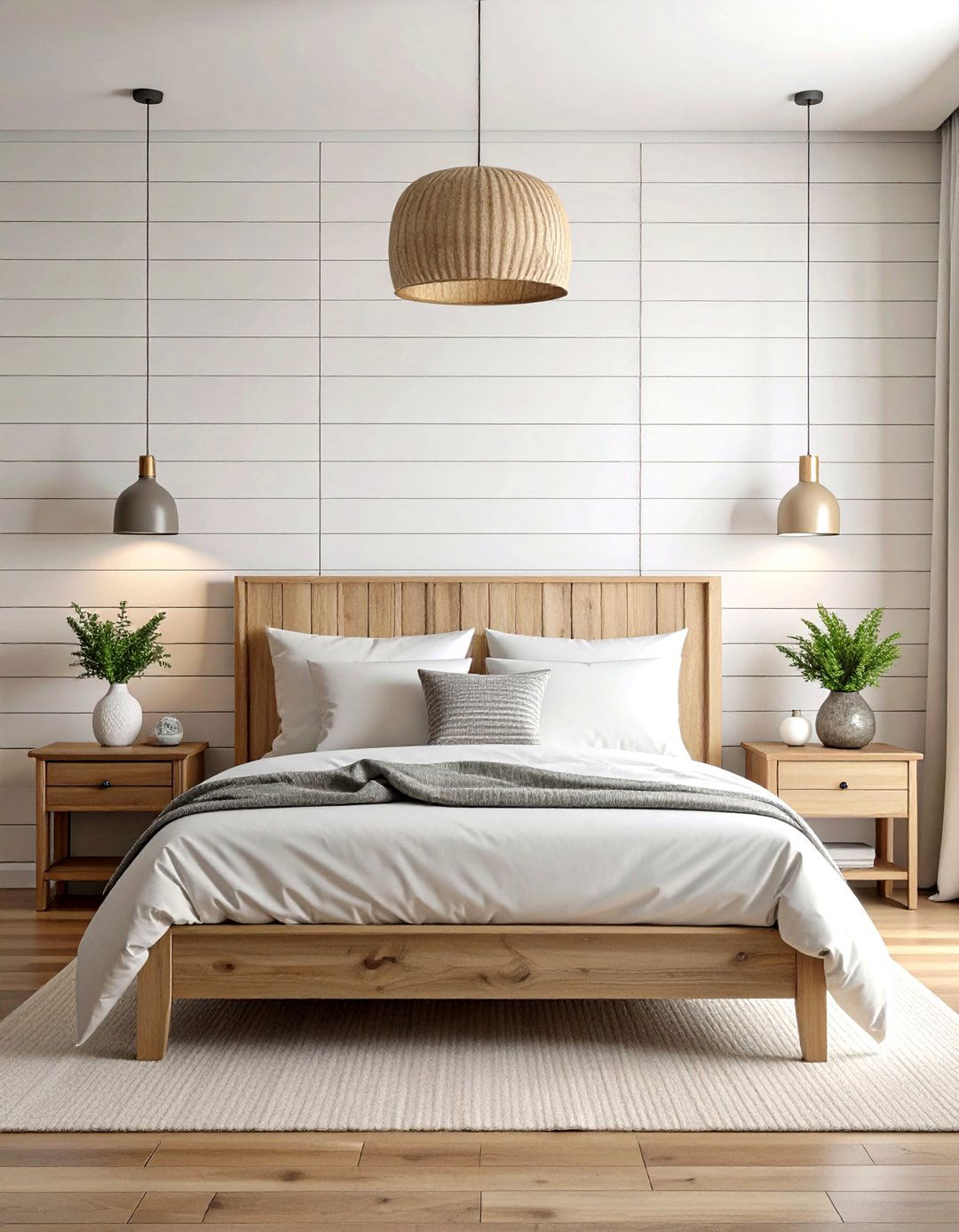
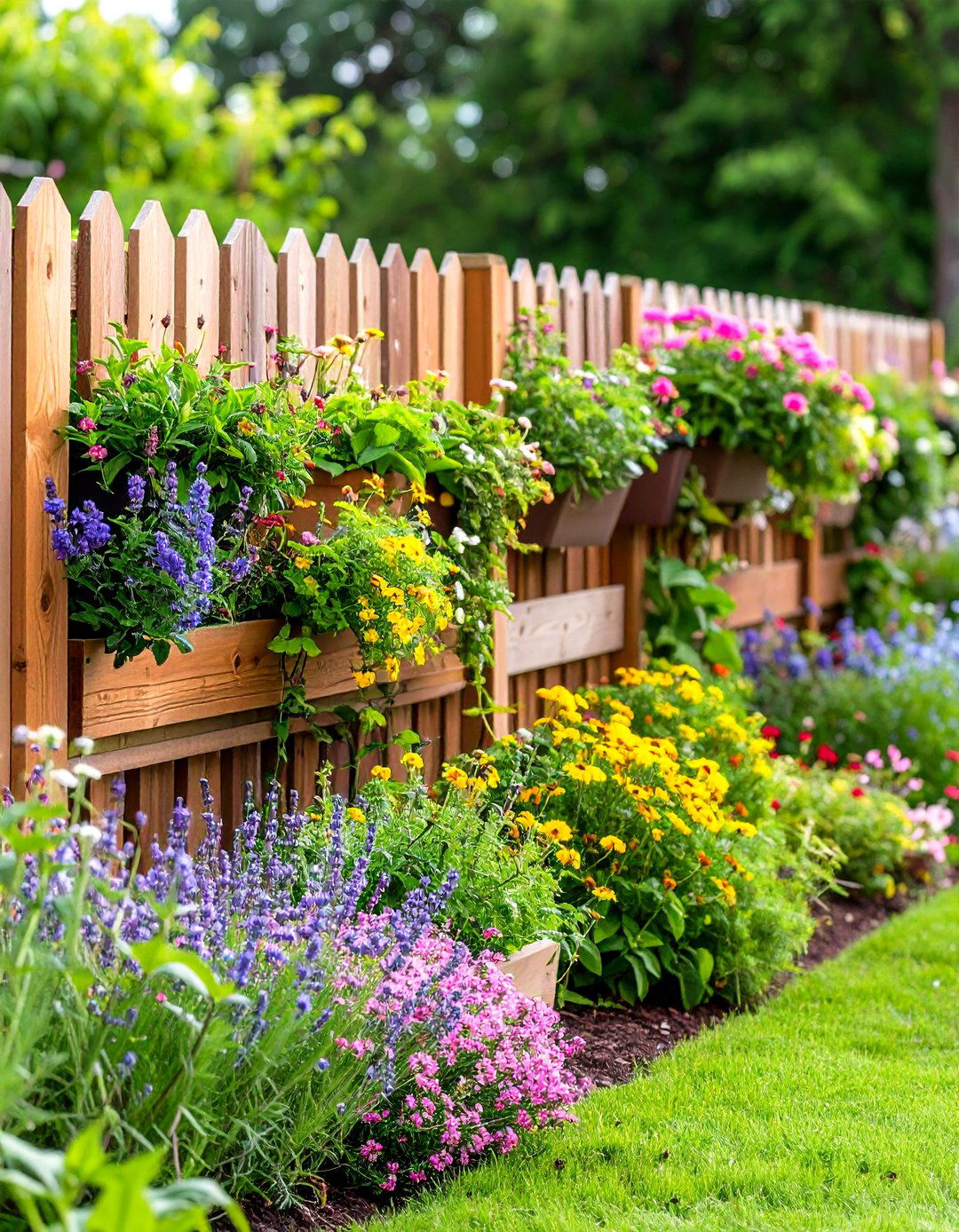
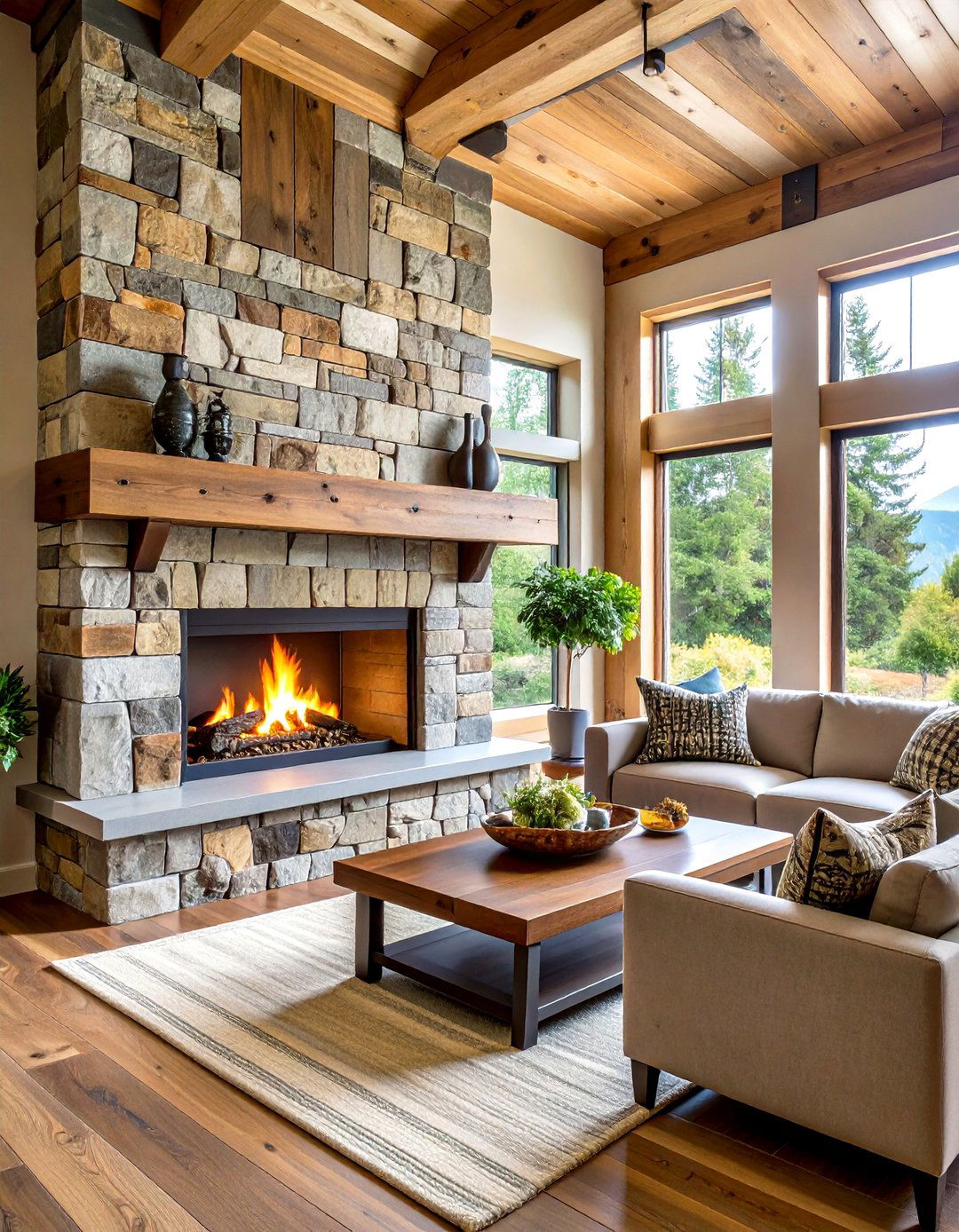
Leave a Reply